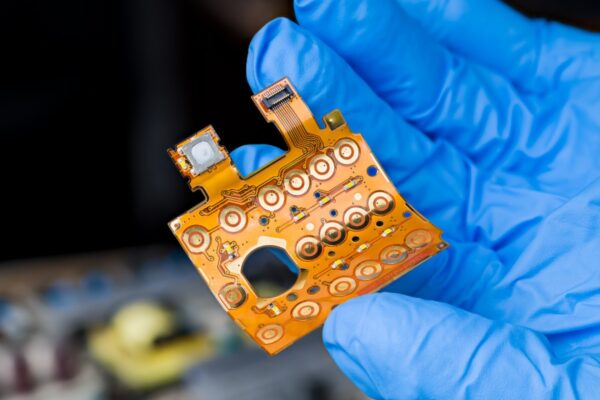What is Adhesion Layer
Adhesion Layer refers to the layers of adhesive used to bond metal foil or laminate material together in the manufacturing of flexible circuits and multilayer laminations in the PCB industry. Adhesives are crucial in binding metal foil to the base material to create a laminate or to bind layers of laminate material together in multi-layer FPCs. The most commonly used adhesives in FPC manufacturing include polyesters (PET), polyimides (PI), acrylics, and modified epoxies, each with their advantages and disadvantages depending on the application.
Adhesive-based flex cores are used to produce various kinds of flex PCBs, and they feature a flexible adhesive that bonds a polyimide PCB core to base copper on either side. Manufacturers use pressure and heat on the adhesive to bond the base copper and the polyimide PCB core together. Adhesiveless flex cores, on the other hand, are often used in applications requiring a higher layer count, as they ensure PCBs hold up in harsh environments and are well suited for flex PCBs needing more flexibility and thinner construction.
Frequently Asked Questions
What Is the Most Important Layer in a Printed Circuit Board
The copper signal layer is considered the most crucial layer in a printed circuit board. It is the layer after which the PCBs are named. Depending on the number of signal layers required, a PCB can have two or four signal layers in the case of 2-layer and 4-layer PCBs, respectively. These signal layers are responsible for establishing connections with other electronic components present in the device.
What Is Adhesive Layer in PCB
The adhesive layer in PCB, also known as coverlay/adhesive, is utilized in the design of flex and rigid-flex boards to bind the different flex layers together. Typically, the coverlay is made of polyimide while the adhesive can be either an epoxy or acrylic based flexible adhesive. Its primary function is to encapsulate and safeguard components in a flexible board, similar to the role played by the soldermask.
How Are PCB Layers Bonded
The bonding of PCB layers is achieved through the use of heated press plates and pressure in this process. The application of heat causes the epoxy resin in the prepreg to melt and cure, while the pressure ensures that the layers are firmly bonded together. To ensure accuracy, the process is computer-controlled, with the heat and pressure gradually increased, held, and then cooled down.
What Is Adhesion Layer
Adhesion layers refer to the thin films made of tungsten, niobium, chrome, or titanium that are used in metallization schemes. Typically, the gold layers are around 1 μm-thick. These layers can be planarized by using a microsecond pulse with a fluence of 1 J/cm2 at a wavelength of 504 nm.
What Is the Function of Adhesive Layer
Transfer tapes are single adhesive layer constructions that enable the user to transfer a thin layer of adhesive onto a substrate. In addition, high-performance transfer tapes, which are also called laminating adhesives, are utilized to assemble multi-layer constructions like membrane switches.





